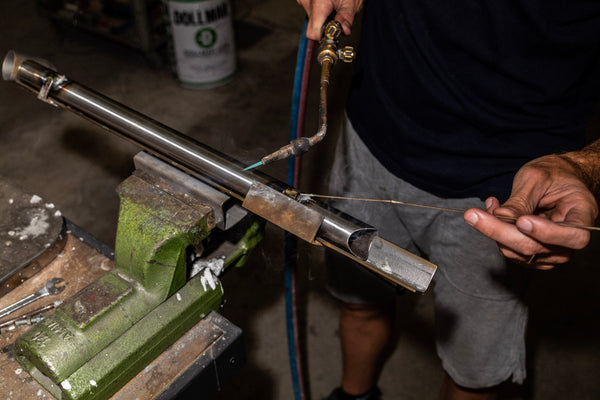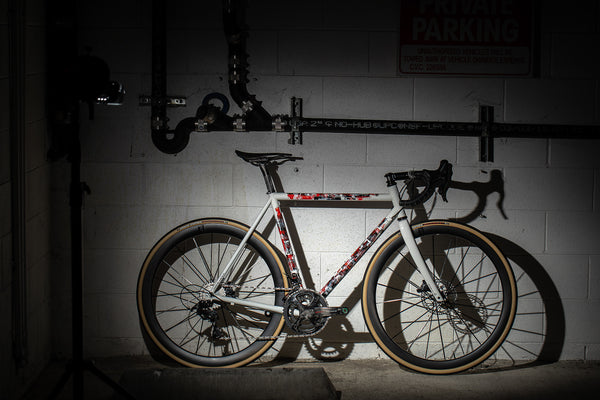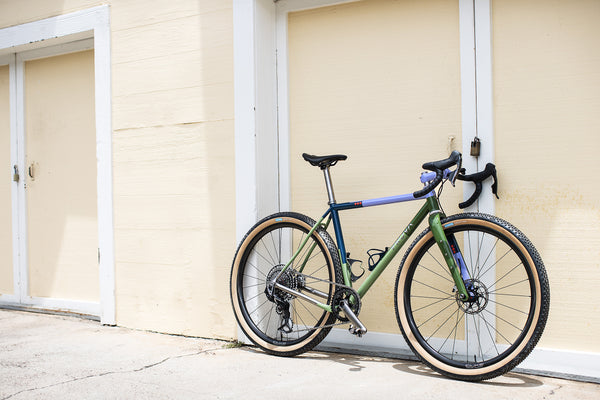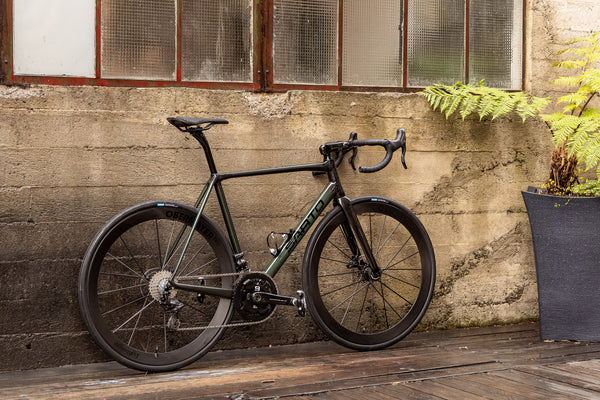Cyclists are full of opinions. We’re deeply particular about every aspect of our bikes, and will go down swinging defending those thoughts. Sometimes those thoughts are based on tradition and lore. Sometimes they’re based on science and data. The thing is, as much as we all want our opinions to reign supreme, there is never really one right answer, as is the case for many things in life, but rather what is right for you. We’ll be starting a new series where the three of us here at AC will divulge our personal preferences and perspectives on a given topic. We’re all very different riders, who’ve come through different backgrounds, leading to pretty varied results in what each of us like.

This week, we’ll be tackling the topic of tires. Specifically, the three dominant ways of which they stay inflated and affixed to the rim—clincher, tubular, and tubeless. Yes, the age old topic, and one we've covered many times ourselves. This time around, we're here not to dive deep into the data and tech specs, but rather engage a casual discussion based solely on our opinions and experience in the field.
Need a refresher on the details on the various options? Head to our previous journal here.
Who we are
Before diving in, we’ll take a minute to brief you on the three of us...panelists, so to speak.

Chad, the fabled founder of AC. Don’t let his boyish good looks fool you. He’s been riding for a long time, like since helmets were nothing more than leather hair nets and cranks were held on by cotter pins (okay that might be a stretch). He came up on the PNW road racing scene in the late 80s/early 90s and has a tendency to prefer things the classic way. Don’t call him a traditionalist—he’s not against technology. He just prefers changes to have measurable performance benefits, not just changes for the sake of pushing something new.

Derek is our marketing and content manager. A millennial by definition, and our resident dirt aficionado. Throughout his youth he spent all waking hours at the skatepark, dirt jump spot, or BMX track before his bicycle appreciation expanded to include drop bars and skinny tires.

Robert our dedicated and detail oriented service manager. While he might be the youngest of the bunch, he’s got an old soul. He’s got an equal appreciation for things classic and new, just as long as they’re dialed and meet his standards of excellence. Before joining us at AC, he spent time on the road as a race mechanic for pro teams, giving an extensive range of experience that few can match.
Now, let’s get on with the discussion.

What’s your background riding any of the three types of tire set up?
Chad: It was a little easier to make this choice when I started riding as there were only tubular and clincher set ups. And even then, clincher technology was not very good. The rubber was hard, narrow and most of the time really really hard to instal on the rim. If you were into performance bikes, tubulars were what you used. In fact, a lot of performance bikes came stock with tubulars. Since I learned to mount tubulars from the beginning, it never really seemed like that big of a deal. It didn’t feel special riding tubulars, it just felt normal.
I did try tubeless when the first Hutchinson tubeless road tires came out about eight or nine years ago and actually liked the set up. I rode them with Fulcrum Racing Zero wheels and they felt good. I was so confident in not getting a flat that I stopped carrying a flat kit. That didn’t last long though.
I do have a fair amount of time on clinchers, mainly in the past few years. Clincher technology has come a long way and the tire/rim combinations feel pretty close to that of tubular or tubeless options. They are just not as light as the tubular wheelsets I use, nor are the tires as supple as the tubeless systems I’ve ridden. That said, clinchers are the easiest to work with in most cases.
Derek: While I’m sure it comes as no surprise that throughout my cycling history I’ve mostly ridden traditional clinchers, I’ve got pretty even experience on it all. It’s probably been over ten years since I started setting up my MTB tires tubeless, and it wasn’t long after that I tried to Macgyver my cyclocross training set up sans tubes.
Several years ago, I was following a friend into a high speed corner when his tubeless road tire blew off the rim and he went sailing into a ditch at full speed. It took me a long time to get over that and embrace tubeless for low volume road tires. Luckily technology has caught up, and I’ve been pretty successful riding tubeless road tires for the past year or so.
In the time I was really focused on racing cyclocross, I was pretty hardcore about tubulars. Until fairly recently, there was really no comparison to the beautiful, supple ride of a tubular. I also had a lot of pride in my talents for gluing and mounting them up. I’ve ridden tubulars on the road as well. God, with a quality tire mounted properly, tubulars feel pretty damn amazing on the tarmac. For convenience sake though, I have predominantly stuck to standard clinchers on the road, at least until recently switching to tubeless.
Robert: I don’t ride.


What do you love and what do you hate about tubulars?
Chad: Since I can’t think of anything bad to say, we’ll just skip to all that is good about the tubular tire! Just kidding. I love the weight. It’s not just the tire, but tubular rims tend to be much lighter than their clincher counterparts. That is something you will feel. I like the safety of a properly installed tubular tire with the emphasis on the properly part. Like Derek notes below, when you get a flat on a tubular you can usually ride it out. It’s still sketch at high speeds, but having tubulars have kept me rubber side down a few times where the alternative would have hurt badly. I love the hand made look and feel to them, I love the history and lore of the tubular tire, I love that despite there being so many modern options, they are still what's used at the highest level of the sport. I also love that it’s so easy to fix a flat (if you carry a spare).
What most hate is the installation process. Based on experience i don’t think its that big of a deal at all. Yes, you have to plan it out a bit more, but when you have good equipment it is not that hard at all, and there are more options out there now, like tubular tape which can make the process very easy. But, the mounting process is really the only part that could be considered a pain in the butt, but I certainly don’t hate it.
Derek: Love, obviously the low weight and supreme ride quality, though high end tubeless systems are closing that gap. There’s also the safety factor. In the event you do have a flat, you can ride out a properly mounted tubular pretty safely. While it's less to do with quality, there's something magical about seeing and feeling a bare cotton casing of certain tubulars. There’s also the baller factor. When you have a spare tubular strapped under your seat rails it lets people know you’re legit!
What I hate, is the timely process of mounting and removing them. Well, really just the removal part. Especially if you need to get the rim back to being totally clean and you need to resort to gnarly chemicals to get the old glue off. Also, if they’re not mounted perfectly and you’re on a lower volume tire, you can definitely feel any imperfections, like a bump near the valve or if the tire is mounted off center in any way.
Robert: Love - The moment I crack open a fresh can of Vittoria Mastik rubber cement, the aroma overtakes me and mentally puts me back in time to a memory of working alongside my uncle back in Golden, Colorado, where we prepped multiple tubulars for the Optum Pro Cycling 2015 road season. There’s a therapeutic ease of mind that comes with the gluing process for me. I love the idea of “slow is fast & fast is smooth” in regards to the tubular tire installation process being slow for the mechanic, but fast rolling for the rider. These tires tend to look and feel significantly more supple. Tubulars are the safest tire technology if mounted properly and they are still present and preferred by many pro cyclists on the pro circuit.
Hate - Nothing really bad to say, these are time consuming to install properly, but worth it IMO.

What do you love and what do you hate about the standard clincher?
Chad: I’ve never really loved clinchers. Always seemed like a compromise to me. Not really the best at anything—heavier than tubulars, more flat prone than tubeless, less safe in the case of a blowout at any speed. I’ll ride them and they can feel really nice now with the new tech out there. But, for me, clinchers are just kind of... blah. If I had to choose one way to go, it would not be the clincher.
Derek: Well, it really depends on the application here. There’s obviously the convenience factor. Easy to fix, you can get a tube or tire in pretty much any bike shop and get rolling in no time. On the road, I really don’t think there's a huge penalty in ride quality, so in many cases the simplicity is great.
On the other hand, especially off road, I hate how prone they are to flats. Pinch flats, puncture flats… tubes are pretty synonymous with getting flats IMO. If you ride hard in the dirt, inner tubes are just not the way.
Robert: Convenience and practicality of use. I love that these are easy to install with a single hand. The standard clincher is becoming a thing of the past. While we tend to see less and less clincher inner tube set ups on new bike builds, I think this technology will always be present. You can find a standard clincher in just about every shop globally without question & the technology will always be a solid fall back if your tube-less tire won’t re-seat itself after that next big blow out. Clincher tube tires are clean and easy.
I HATE when people don’t pre check that their tube is all the way inside the tire and then pump their tire to 7 bar only to find that the tube is being pinched by the tire bead followed by a loud boom.

What do you love and what do you hate about tubeless?
Chad: They can be smoooooth. It really depends on setup and having a good rim/tire combination that works best for how you ride, but if you nail that, the tubeless set-up is smooth as hell. My go to setup is the ENVE 2.2 wheel with a 25 or 28mm Vittoria Corsa tire. They feel pretty amazing, super smooth, tons of grip, just a great feeling system.
However, I think setting them up can be as much if not more a pain in the ass than tubulars. You may need an air compressor or something like that just to get the initial bead set. The rim tape, the sealant. It’s not like it’s hard to do, just a pain. And if you don’t have compressed air and you need it, you are shit out of luck. Funny enough, I have gotten more flats on my tubeless setups than I usually do on tubulars or even clinchers. I’m sure that’s just down to luck mostly, but still, it’s what it is right now. And, on two of my most recent flats, one on the front the other a rear, my bike and I were covered with sealant. But, they did end up sealing and I got home w/out too much issue.
Derek: There’s so much to love! First and foremost, the massive reduction of flat tires. Thanks to sealant and Dynaplugs, avoiding or quickly recovering from a flat has never been easier. The reliability has come a very long way in recent years and I now have full confidence in riding them across all platforms. For off-road the performance benefits have always been there, but on the road I feel they’re catching up to tubulars.
Certainly, they’re not without drawbacks. Obviously, mounting them can be a huge pain. It can really be a crap shoot as to how quickly a tire will mount up. Some times you can get a tire seated in no time with just a standard pump. Sometimes you need to fuss around with an air compressor, trying all kinds of tricks while getting sprayed with sealant. Without the proper equipment, it can sometimes be impossible. In the event you can’t quickly seal or plug a flat tire out on the road or trail, the mess of sealant can be super frustrating. Nothing is perfect, but I think the benefits are well worth it.
Robert: To see more cyclists out riding and enjoying this thing called a bike is what I really love. If that means the cyclist only wants to ride “Tube-less” tires because everyone else is then so be it. There’s a lot of talk with tube-less taking over and I think the technology has come a long way. Tube-less was still “new” when I first started working in the industry and has since become the new “norm” in a sense.
I hate the mess and initial set up. The tire companies create slightly tighter beads to accommodate the tube-less technology which can get old real quick if you’re installing 10 sets of tires a day. Tube-less technology has it’s benefit of running a lower tire pressure and keeping you rolling 80% of the time as small punctures will mend themselves with the sealant, but with the off chance that nail or shattered glass bottle slices your tire and the sealant doesn’t do it’s job it is now showering you with a nice spray & you now how a flat tire with latex all over your bike & gear. Tube-less tire sealant will coagulate if you let the bike sit idle for extended periods of time.

Does any style particularly stand out as the overall best option to you?
Chad: Tubular. It is a much lighter system and they just feel so much better to me in the hills and under acceleration. I think that people unnecessarily think that they are overly complicated to use, but in my experience that is not the case. I do think that tubulars are best for more experienced riders who know how to work on their own equipment, and that if ease of use is the number one factor in deciding which way to go, clinchers still rule. But, here is an interesting way to look at this. If you never flatted, which one of these would you want to use? And, are we talking road? Gravel? Mountain biking? Time trials? Racing on the track? All of these things require different equipment when trying to get 100% out of yourself and the parts you choose. I’m basing my tubular choice on road riding as for off road, no brainer, tubeless is the way to go.
Derek: Clearly they all have their pros and cons, but for me personally tubeless is the way to go. If budget were no constraint, I'd probably have a set of super light tubular tires/wheels for certain road rides, but I tend to base my bike set ups for all around use.
Robert: For the simple fact that I do not like cleaning latex off my bike/person, I will say the standard clincher with tubes is my choice, followed by tubular, and then tube-less.

What kind of tires are on your bike(s) right now?
Chad: The two bikes that I’ve been putting the most miles on recently are my Pegoretti Marcelo and Mosaic RT-1. On the Pegoretti I’ve been running Campagnolo Hyperon tubular wheels with 25mm Vittoria Corsa tires. On the Mosaic, I’m running ENVE 2.2 wheels with 25mm Schwalbe Pro One tires. FWIW, my Pinarello Grevil Plus gravel bike is shod with ENVE G23 wheels and WTB Resolute 42mm tires that are set up tubeless.

Derek: At the moment, every bike I ride with regularity is set up tubeless. Mountain and gravel bikes obviously, but I’ve been riding tubeless exclusively on the road for the last year as well. Even my goofball tracklocross fixed gear bike has a tubeless set up. I guess you could say I’m pretty bought in! Currently I'm riding Challenge Strade Biancha 700 x 36c on my road bike, WTB Resolute 700 x 42c on my gravel bike, and Maxxis Minion DHF/DHR 29 x 2.4” on my mountain bike.

Robert: Vittoria Corsa Controls for the winter/spring weather - Typically Vittoria Corsas on the road bikes and Track bike during the summer months. Standard clincher tube. Will probably drop on some Bora 50 tubualrs at some point.
That wraps up our tire discussion. An interesting, though not surprising take away, is that despite us all seeming to agree on the pros and cons to each system, we still all vary on what we pick as our option of choice.
So what's the choice for you? Do you have a favorite or do you mix it up? What's on your bike right now? We want to hear from you, so let us know in the comments or send us a note in an email. Thanks for reading!









Back to Journal